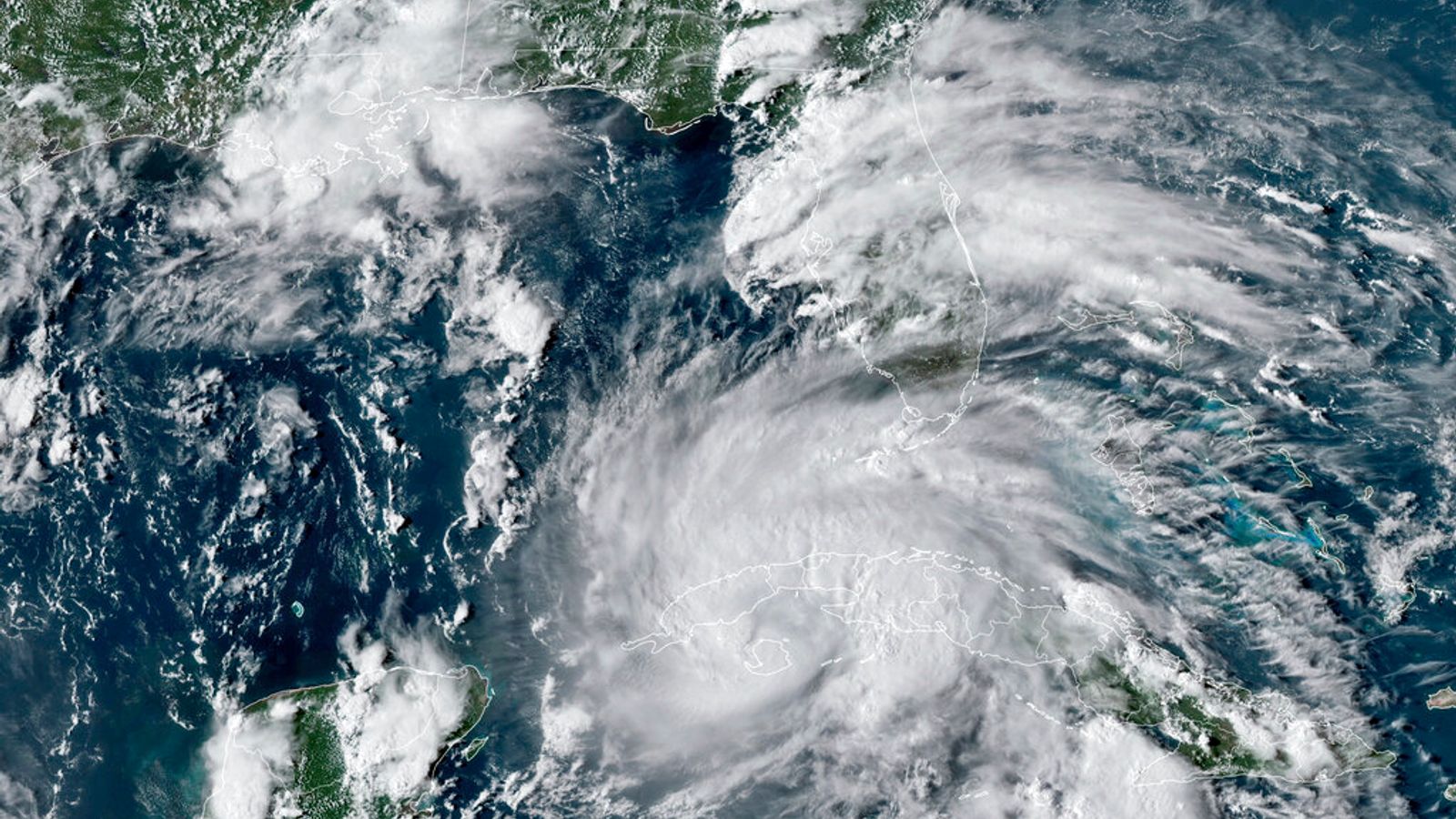Thousands on the south coast of the US are bracing themselves before Hurricane Ida is expected to slam ashore this weekend.
It’s set to bring winds reaching 140mph (225kph) with torrential downpours dumping up to 20 inches (50cm) of rain across the central Gulf Coast from Sunday, amid fears of “significant flash and river flooding”, the National Hurricane Centre (NHC) said.
Hurricane Ida is expected to make landfall in the Mississippi River delta region, west of New Orleans, Louisiana, tomorrow – Sunday 29 August – the exact date Hurricane Katrina ripped through the region 16 years ago.
Tropical-storm conditions are likely to arrive within the hurricane warning area along the coast of Louisiana Sunday morning. Preparations to protect life and property should be rushed to completion today #Ida pic.twitter.com/u6QZ1cuVYR
However, Ida is set to be even more deadly and is expected to be graded as a category four hurricane compared to Katrina, which was assessed as category three when it hit land southwest of New Orleans.
A category four is described as a major hurricane that will cause catastrophic damage, with well-built homes expected to sustain severe damage.
According to the Saffir-Simpson hurricane wind scale used by the NHC: “Power outages will last weeks to possibly months. Most of the area will be uninhabitable for weeks or months.”
Residents across the south coast have been urged to take precautions ahead of the extremely dangerous weather system.
Louisiana is expected to be particularly hard hit with President Joe Biden approving a federal emergency declaration for the state ahead of the storm.
“This will be a life-altering storm for those who aren’t prepared,” said National Weather Service meteorologist Benjamin Schott during a news conference with Louisiana governor, John Bel Edwards.
Calls have been made for voluntary and mandatory evacuations across the region.
But New Orleans mayor, LaToya Cantrell, said it wasn’t possible to order a mandatory evacuation for the entire city, due to the storm surging in intensity.
Hurricane Ida progressed from a tropical storm to a hurricane as it crossed western Cuba with top winds of 80mph (128kph).
In the early hours of Saturday morning, the storm was centered around 510 miles (825 km) southeast of New Orleans – as city officials warned of power outages.
A hurricane warning was issued for most of the Louisiana coast, from Intracoastal City to the mouth of the Pearl River.
A tropical storm warning has been extended to the Mississippi-Alabama border.
Fishing guide, Captain Ross Eichorn told how he fears the warm Gulf waters will “make a monster” of Ida.
“With a direct hit, ain’t no telling what’s going to be left – if anything,” he said.
“Anybody that isn’t concerned has got something wrong with them,” he added.
Around 150 medical personnel and 50 ambulances will be sent to the Gulf Coast to help embattled hospitals already dealing with the coronavirus pandemic.
Hurricane Katrina claimed the lives of more than 1,800 people with catastrophic flooding in New Orleans leading to 80% of the city going underwater.
Many homes were swamped to the rooftops with some victims drowning in their attics in the tragedy.
Louisiana and New Orleans were left devastated after more tornadoes hit the area in 2017 – 12 years after Katrina, just as neighbourhoods and communities were starting to recover.
Dozens were left hurt and around 10,000 homes were stripped of electricity, but no deaths were reported, said Louisiana governor Edwards.






















